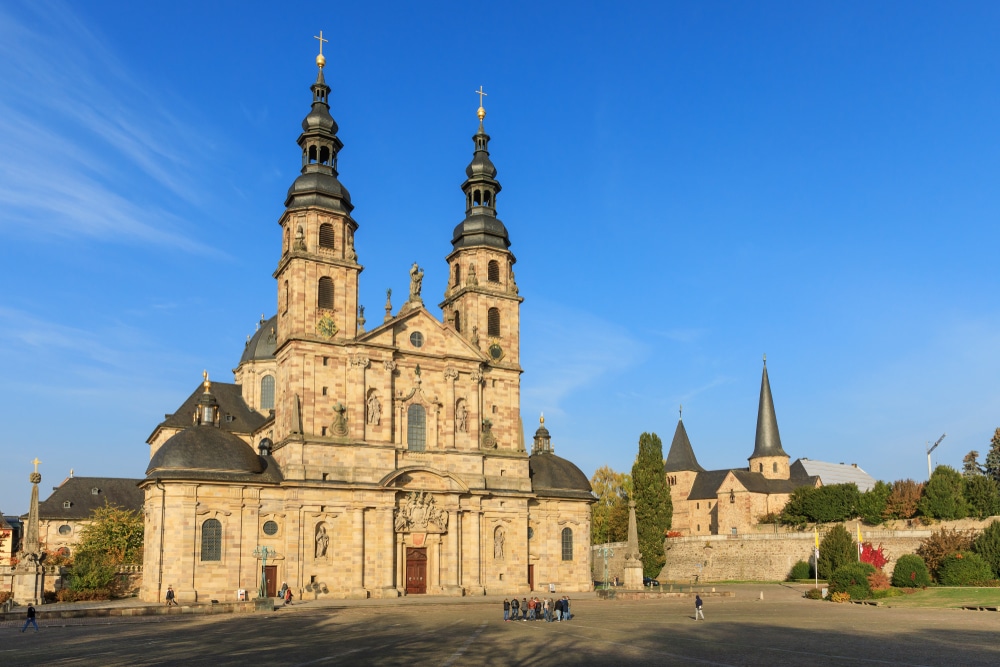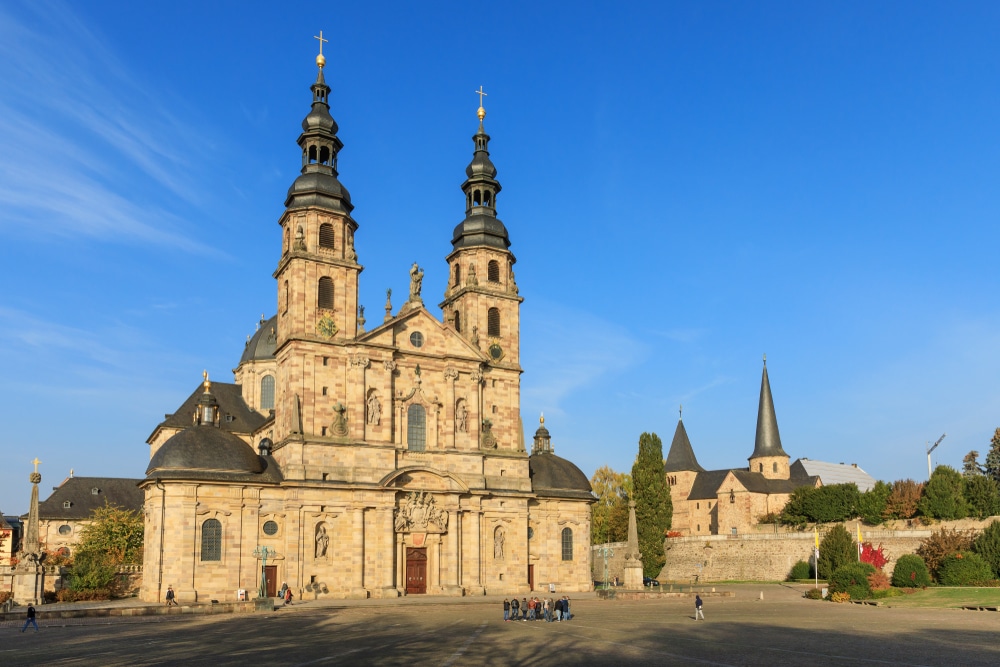The Cathedral of Fulda
The High Cathedral of Fulda (St. Salvator) is the cathedral of the diocese of Fulda. At the same time it is the burial church of St. Boniface and as such the destination of the Boniface pilgrimage. Boniface (673 - 754) was a missionary and church reformer in the function of a papal legate for (at that time predominantly pagan) Germania. He founded several monasteries, including the one in Fulda, and was Bishop of Mainz and Utrecht.

Location and history
St. Salvator's Cathedral is the centre of Fulda's baroque quarter and the town's landmark. Adalbert von Schleifras - then prince abbot - had it built from 1704 onwards, the master builder was Johann Dientzenhofer. The cathedral is a three-nave basilica, it initially served the monastery founded by Boniface as an abbey church, in 1752 it became a cathedral. The master builder Johann Dientzenhofer was considered the most important German master builder at that time, the Pope had personally recommended him for this task.
Dientzenhofer's contact with Rome, where he had undertaken study trips, also resulted in the architectural concept of the cathedral at Fulda: its internal system was deliberately modelled on St. Peter's Basilica. On the site of the cathedral, there was already a predecessor building, the Ratgar Basilica, which was very important at the time, but it was demolished in favour of the new building. Some of its foundations were used. The shell of the new cathedral was completed in 1707, the roofing in 1708, the interior decoration by 1712, and the consecration on 15 August 1712. On the consecration plaque the cathedral is only called "Christus Salvator". The Benedectines used the baroque new building as an abbey church, at the same time it became the burial church of St. Boniface.
Fire of the Fulda Cathedral
The Cathedral of Fulda was affected by a fire in 1905 that caused similar damage to the fire of Notre-Dame de Paris in April 2019. The occasion was a celebration with fireworks for the 1150th anniversary of the death of St. Boniface. A firework probably set fire to caulking nests in the right tower of the cathedral, which then burned out completely. Unfortunately, the two bells "Bonifatius" and "Osanna" were destroyed, but the other parts of the cathedral remained largely undamaged. The material damage was nevertheless considerable, and a legal dispute arose over its settlement.
This so-called "cathedral fire case" is very significant from the point of view of legal science and found its way into legal history. The fireworker had obviously acted negligently, which is why the Prussian state - the bearer of the church building burden - demanded recourse from him. The case was brought before the Reichsgericht (Imperial Court) until 1913. The fireworker was not sentenced to recourse for formal reasons, but lawyers regularly point out that modern law of obligations would have reached a different decision.
Second World War: Destruction and Reconstruction
Fulda Cathedral suffered air-raid damage during World War II and was subsequently rebuilt until 1954. In November 1980, Pope John Paul II visited Fulda and was received on the cathedral square by over 100,000 faithful. Today, Fulda Cathedral presents itself in its original architecture, the three-aisled and cruciform pillar basilica with a northern and southern transept. The central dome is 39 m high, the nave, which faces east, is 99 m long. The two facade towers are 65 m high. The central nave ends with the high altar, behind which are the high choir and the Boniface crypt.

